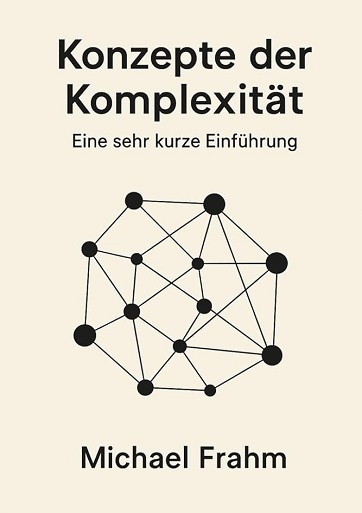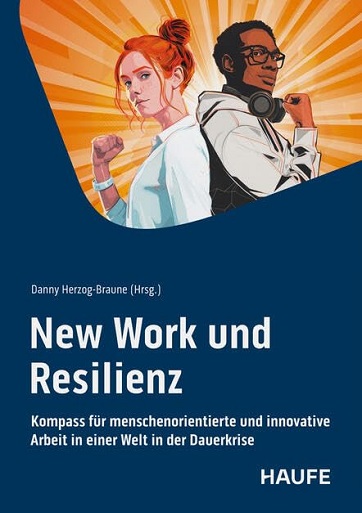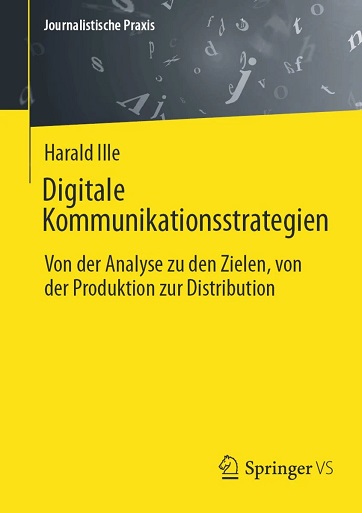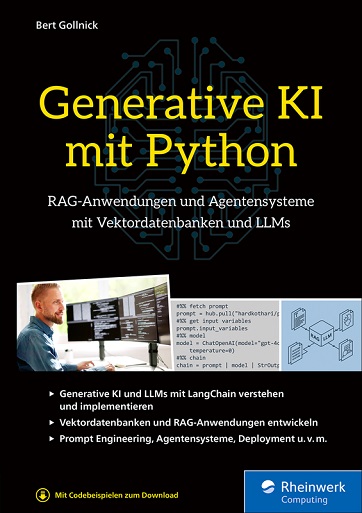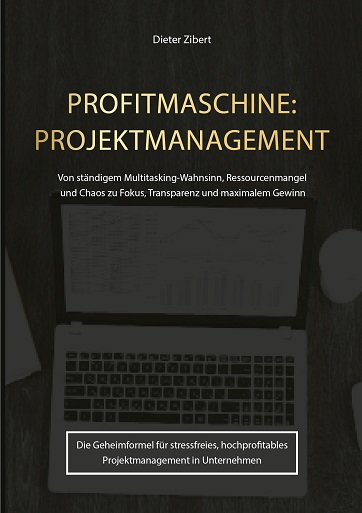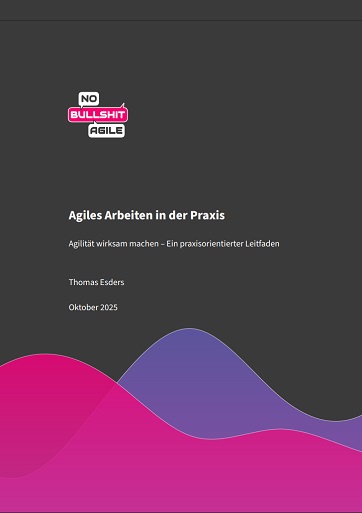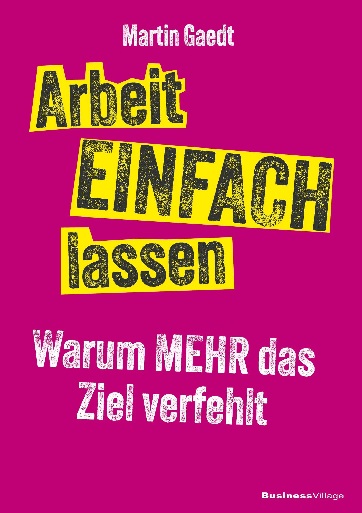Oh, books with impact!
‘To read is to dream, guided by someone else’s hand.’ – Fernando Pessoa
‘Books are a uniquely portable magic.’ – Stephen King
‘Reading is thinking with someone else’s head instead of ones own.’ – Arthur Schopenhauer
Sometimes a single sentence is enough to make us think. A chapter that stays with us. A book that moves us and whose impact remains.
Reading can enchant, disturb and change us. Books are more than words on paper. They are food for thought, companions, signposts. That’s why I’m once again presenting books that have a special impact in their own way, each in its own right. This time by and with Michael Frahm, Danny Herzog-Braune, Harald Ille, Bert Gollnick, Dieter Zibert, Thomas Esders and Martin Gaedt.
Concepts of Complexity
(Konzepte der Komplexitaet)
A very brief introduction
(Eine sehr kurze Einfuehrung)
Michael Frahm
Michael, what is your book about?
Michael: The book offers a very compact introduction to various schools of thought and key figures who have dealt with or are dealing with the topic of complexity. It presents 36 personalities in 11 thematic categories, each on one or two pages. It introduces a concept developed by each person, possible practical applications, a reflection question and a mini exercise. The aim is to provide easy access to different perspectives on complexity.
Why did you write the book?
Michael: I worked my way through many ‘major’ works and wanted something more compact. That’s how the little book came about over time. I also really enjoyed getting to know the respective figures and learning about their work.
Who should read the book?
Michael: The book is aimed at anyone interested in complexity, regardless of whether they are new to the subject or already have experience. It is suitable for anyone who wants to get an overview. Anyone dealing with complex issues will find it a comprehensible and compact guide.
→ Here you can find more information about the book ‘Konzepte der Komplexitaet’.
New Work and Resilience
(New Work und Resilienz)
A compass for people-oriented and innovative work in a world in constant crisis
(Kompass für menschenorientierte und innovative Arbeit in einer Welt in der Dauerkrise)
Danny Herzog-Braune
Danny, what is your book about?
Danny: Our joint work, ‘New Work & Resilienz – Kompass für menschenorientierte und innovative Arbeit in einer Welt in der Dauerkrise’, published by Haufe Verlag, is about how we can rethink work in an increasingly complex, uncertain world characterised by a polycrisis – in order to remain mentally strong and resilient at the same time. Together with 23 other authors, I show how principles of New Work (e.g. self-organisation, purpose orientation, agile methods) interact with concepts of resilience (e.g. stress competence, mindfulness, emotional stability) and can reinforce each other.
The book provides both theoretical foundations and many practical exercises, reflections and case studies – so that readers not only understand what is necessary, but also how they can implement it in concrete terms.
Why did you co-author the book?
Danny: Because I have observed that although many organisations and managers talk about ‘New Work’, they often find it difficult to establish it in a sustainable and meaningful way in turbulent times.
I am convinced that resilience is not purely a personal skill, but a team and organisational phenomenon that is too rarely taken into account in New Work concepts. From my work (coaching, consulting, moderation, etc.), I have gained many insights and experiences that others can benefit from in order to learn faster and avoid mistakes.
I also want to build a bridge between theory and practice, not only in an inspiring way, but in a concrete and manageable way.
And who should read the book?
Danny: The book is aimed at:
- managers and team leaders who want to introduce or deepen New Work
- consultants, coaches and facilitators who accompany change processes in organisations
- employees who want to actively strengthen their own resilience and make their everyday work more meaningful and effective
- organisations that are undergoing transformation and seeking a balance between agility, sustainability and human strength
The book encourages readers to take a critical look at the status quo, try new things and take responsibility.
→ Here you can find more information about the book ‘New Work und Resilienz’.
Digital Communication Strategies
(Digitale Kommunikationsstrategien)
From analysis to objectives, from production to distribution
(Von der Analyse zu den Zielen, von der Produktion zur Distribution)
Harald Ille
Harald, what is your book about?
Harald: We often talk about content strategy, communication strategy and strategic approaches, but what these actually entail and how they work in practice often remains vague. And ‘vague’ is not very strategic.
I have been working with a number of strategy models for years and wanted to present them together: Some are more static, such as Kristina Halvorson’s Content Strategy Quad, and others are more dynamic, such as Mirko Lange’s SCOM model, which I worked with for two years. Above all, however, I wanted to turn our thinking upside down: we shouldn’t start with the strategy models or with the technology that makes digital communication possible in the first place. Instead, I want to look at ‘us’ first, us humans in digitalisation:
- What are our needs as a target group?
- What are our hurdles as communication managers?
- What makes a community, and why are influencers so useful and popular?
- And: Does communication actually contribute to value creation?
Why did you write the book?
Harald: I wanted to have a script for my university seminars. I haven’t yet found a handy textbook that brings together the individual methods, models and metrics that I talk about several times a year. I tried out the first drafts in Moodle and as a paid webinar on my blog, but it’s not the same as a book with the smell of fresh ink that you can leaf through, doodle in and proudly place on the shelf with your other unread books.
Communication professor Dr Gabriele Hooffacker, who publishes the well-known Yellow Series on Practical Journalism, didn’t have to convince the publisher for long. We already used this Yellow Series when we were students – and now my little script is part of this constantly updated series. That makes me a little sentimental. 😊
And who should read the book?
Harald: Hehe, now you’re challenging my chapter on target group orientation!
At around 150 pages, it’s very compact, contains some practical examples and a few hopefully helpful prompts, and is perfectly suited as a reference work: so if you don’t have time to read the whole thing or want to look up individual KPIs, you can just read individual sections of the book.
I had people in the communications departments of public authorities in mind, specifically city administrations. In many places, there is no coordinated strategic agenda setting; the press office simply passes on whatever trickles out of the apparatus. I would like to encourage people to take a more strategic approach and try something new, such as the Fediverse. That would certainly be good for the ‘city brand’!
→ Here you can find more about the book ‘Digitale Kommunikationsstrategien’.
Generative AI with Python: AI in a Business Context
(Generative KI mit Python: KI im Unternehmenskontext)
RAG applications and agent systems with vector databases and LLMs
(RAG-Anwendungen und Agentensysteme mit Vektordatenbanken und LLMs)
Bert Gollnick
Bert, what is your book about?
Bert: My book is intended as a comprehensive practical guide. It is designed to help anyone who wants to understand generative AI and develop solutions with Python. It’s about how to build intelligent applications using the latest technologies such as large language models (LLMs), vector databases and retrieval-augmented generation (RAG). I also show how to develop and deploy agent systems that can solve complex tasks independently. In short, it’s a hands-on guide to harnessing the power of generative AI with Python and whetting your appetite for more.
Why did you write the book?
Bert: Generative AI is an incredibly fast-moving field, and there was a lack of resources that brought together the essential concepts and practical implementations for Python developers in a way that was understandable and practical. I wanted to build a bridge between theory and concrete application so that anyone interested in it could get started right away.
I am also fascinated by the potential of these technologies to change the way we work and live. With this book, I want to enable others to be part of this transformation and create innovative solutions themselves. It is my contribution to democratising knowledge and advancing developments in Germany in the field of generative AI.
And who should read the book?
Bert: The book is aimed at anyone who wants to implement generative AI solutions with Python. This includes Python developers who want to expand their knowledge in the field of AI. But data scientists, machine learning engineers and ambitious students are also part of the target audience.
I have tried to explain the concepts as clearly as possible so that even beginners with a passion for technology can easily understand them. If you want to know how to use LLMs effectively, create your own RAG applications or develop autonomous agent systems, then this book is for you. It is for anyone who wants to go beyond simply using AI tools and wants to understand and design the underlying mechanisms themselves.
→ Here you can find more information about the book ‘Generative KI mit Python’.
Profit Machine Project Management
(Profitmaschine Projektmanagement)
From constant multitasking madness, resource shortages and chaos to focus, transparency and maximum profit
(Vom ständigem Multitasking-Wahnsinn, Ressourcenmangel und Chaos zu Fokus, Transparenz und maximalem Gewinn)
Dieter Zibert
Dieter, what is your book about?
Dieter: ‘Profit Machine Project Management’ shows how companies can focus their project work on profit, transparency and strategic benefits. At its heart is the TEMPO model I developed, which combines five key levers: transparency, bottleneck analysis, modelling, planning and optimisation.
Many organisations work hard but achieve too little. The reason: too many parallel projects, unclear priorities and overworked teams. This book provides a systematic methodology to address precisely these issues – not with more tools or theory, but with a clear, economically effective system.
It offers practical approaches for making project landscapes manageable, controllable and, above all, profitable, with a focus on entrepreneurial added value.
Why did you write the book?
Dieter: I wrote the book because I repeatedly observed how much potential remains untapped in project work. In many companies, a lot is achieved operationally, but little is gained strategically.
I wanted to create a book that not only teaches decision-makers methods, but also provides concrete solutions:
- How do we create clarity?
- How do we manage resources sensibly?
- How do we achieve significantly more impact with the existing resources?
The TEMPO model is my answer to these questions; simple, structured and developed from practical experience.
My goal was to provide a tool that makes project work not more complicated, but more effective – economically, measurably and sustainably.
And who should read the book?
Dieter: ‘Profit Machine Project Management’ is primarily aimed at entrepreneurs, managing directors and decision-makers who want to ensure that their projects are not only implemented, but also managed in an economically sensible way. It offers a clear methodology for using project work specifically as a lever for value creation, with a focus on transparency, prioritisation, resource management and profit orientation.
In addition, the book is also aimed at project managers and PMO managers who want to professionalise their working methods and make their projects more successful. They are provided with tried-and-tested tools for identifying bottlenecks at an early stage, establishing clear processes and bringing projects to fruition more efficiently, in line with the company’s strategic goals.
Whether as inspiration for realigning project management or as a concrete guide for optimising ongoing projects, the book offers valuable approaches for both target groups to understand projects no longer as a cost factor, but as a targeted investment with measurable benefits.
→ Here you will find more Information about the book ‘Profitmaschine Projektmanagement’.
Agile Working in Practice
(Agiles Arbeiten in der Praxis)
Making agility effective – A practical guide
(Agilitaet wirksam machen – Ein praxisorientierter Leitfaden)
Thomas Esders
Thomas, what is your book about?
Thomas: My book is about the honest and pragmatic side of agile working. Many of us are familiar with the feeling: we use Scrum, have our daily meetings and maintain backlogs, but it often still feels tedious and ineffective. The book is a kind of antidote to this. It takes us back to the core of the agile manifesto and shows why the right attitude and mindset are more important than any method.
Instead of just following rules, we look at what really matters: how teams work well together, how modern leadership works, and how we get our customers or other stakeholders on board as real partners. In the end, it becomes very practical with Kanban, because this method is often closer to the agile core without forcing us into rigid ceremonies.
Why did you write the book?
Thomas: The idea for the book came directly from my podcast ‘No Bullshit Agile’. After more than 80 episodes and many conversations, I felt it was time to summarise my experiences from over 20 years of practice in a structured way.
I wanted to distil the essence of all the discussions and dispel the many myths and misconceptions that make our everyday agile lives so difficult. It is my attempt to share a down-to-earth perspective – away from buzzwords and complicated frameworks, towards what agile working really means.
And who should read the book?
Thomas: I wrote the book for anyone who works in agile environments and feels that there must be more to it than just following rituals. It’s for you if you
- are frustrated with ‘fake agile’ and empty ceremonies as a developer, Scrum Master, product owner or manager.
- are looking for concrete, applicable tools and ways of thinking instead of rigid dogmas.
- If you value a pragmatic perspective on agility.
In short, it is for anyone who has the courage to question the status quo in order to truly improve collaboration for themselves, their team and their customers.
→ Here you can find more information about the book ‘Agiles Arbeiten in der Praxis’, which is also available on GitHub, so that people from the agile community can add knowledge.
Simply Let Work Go
(Arbeit EINFACH lassen)
Why MORE misses the mark
(Warum MEHR das Ziel verfehlt)
Martin Gaedt
Martin, what is your book about?
Martin: Simplification. I show how tidy processes in companies simplify work. Simplicity is a common thread running through history. We often call simplification innovation.
Every innovation leads to a new standard. And every new standard eventually becomes obsolete. I show how standards can be changed and developed in a targeted and skilful manner.
I call for people to simply be allowed to work by cutting through the thicket of rules. Then people can channel their energy effectively.
I explain ghost working and the lie about laziness. Currently, people in Germany are working more than ever before. The book dispels many prejudices.
I also propose a 32-hour full-time working week as a fair working time model. 32 instead of 40 has numerous advantages. It sounds radical – but so did the 5-day week at first.
Many perspectives show that shorter working hours are possible, healthy and performance-enhancing. 70 years ago, ‘Saturdays belong to Daddy’ led to a great new model.
Why did you write the book?
Martin: Populist and cynical statements such as ‘work as an interruption to leisure time’, ‘Germany as a leisure park’ and ‘prosperity is not sustainable with a 4-day week’ annoy me. I provide facts and contradict the alleged lack of motivation.
I show huge potential in terms of performance and time that is lying fallow because it is being wasted.
Instead of MORE work, we need MORE responsible treatment of people and their time. Companies hire qualified people to work together on the success of the company. But many managers do not trust that the selected specialists will perform without supervision. Those who do trust, however, find that trust leads to good results.
I provide concrete examples from small and medium-sized businesses and the skilled trades for all topics. I show how much has already been done and how EASY it is.
And who should read the book?
Martin: Anyone looking for positive facts about the labour market.
Anyone who wants to use tools and hacks to discover and eliminate worthless work.
Anyone who wants to gain energy and open up scope for action in their company.
Anyone who takes people seriously and relies on trust instead of micromanagement.
Anyone who welcomes MORE healthy work through relaxation: power and breaks.
Anyone who wants to eliminate work clutter and delays in order to use working time sensibly.
Anyone who wants to value the old and promote the new will discover the essentials.
Anyone interested in change will find many current examples.
→ Here you will find more information about the book ‘EINFACH lassen’.
How do books have an impact?
Sometimes the impact of a book is obvious: a thought strikes a chord, an idea sticks, a sentence changes your perspective. And sometimes it is subtle: it grows between the lines, accompanies us unnoticed and later resurfaces in a decision, a conversation or an attitude.
The effect a book has is as individual as the people who read it. For some, it is inspiration, for others a catalyst for action or a source of comfort in challenging times. Some books open up new perspectives, others confirm what we have long suspected.
I am fascinated by how differently books can affect people. The same text can inspire today and irritate tomorrow. That is precisely where its strength lies: its impact arises in dialogue with the reader and continues in everyday life. Perhaps one of the recommended books will have an impact on you too?
Notes:
Would you like to discuss books that have an impact as a multiplier or opinion leader? Then share this post in your network.
Here you will find more recommendations for books that have impact:
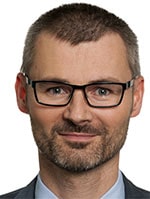
Michael Schenkel
Head of Marketing, t2informatik GmbH
Michael Schenkel has a heart for marketing - so it is fitting that he is responsible for marketing at t2informatik. He likes to blog, likes a change of perspective and tries to offer useful information - e.g. here in the blog - at a time when there is a lot of talk about people's decreasing attention span. If you feel like it, arrange to meet him for a coffee and a piece of cake; he will certainly look forward to it!
In the t2informatik Blog, we publish articles for people in organisations. For these people, we develop and modernise software. Pragmatic. ✔️ Personal. ✔️ Professional. ✔️ Click here to find out more.
